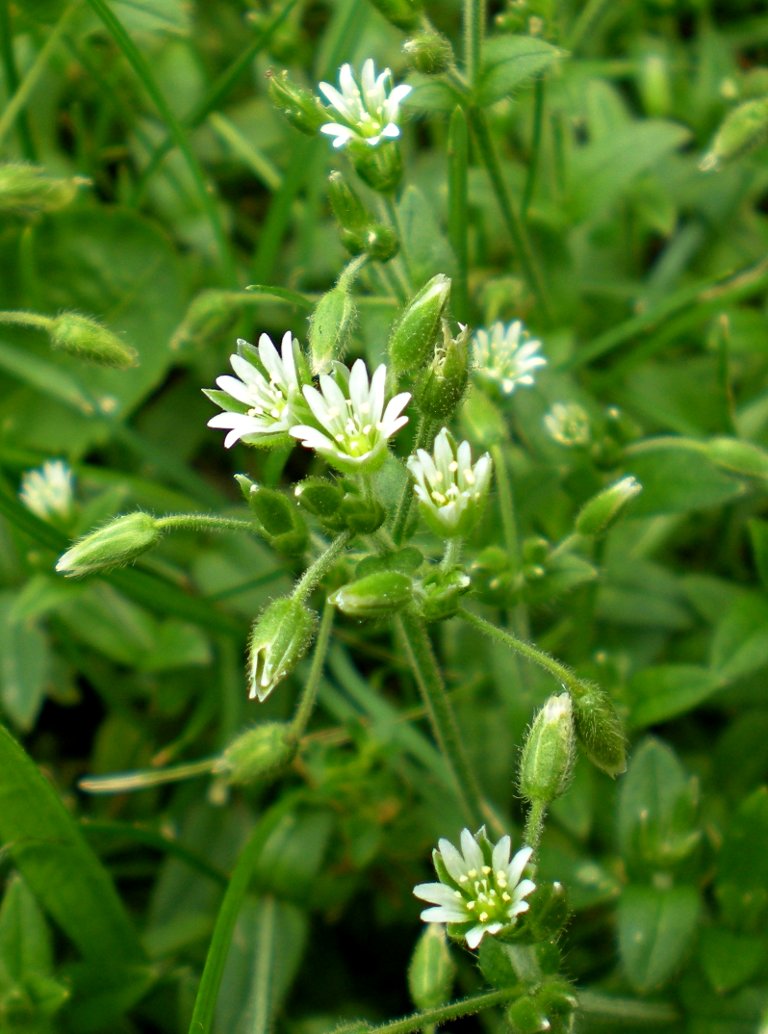
A pretty little flower when we magnify it like this, Chickweed is one of those low lawn-dwellers that suburban homeowners abhor. If your lawn simply must be made up of uniform blades of grass snipped to a precisely even height, then chickweed is your enemy. Otherwise, it does little harm, and cheers us up with starry little flowers that reward a close look, giving us an incentive to get better acquainted with the natural world of our own front yards. This patch grew in a side yard in Beechview, where it was blooming in the middle of June.
Gray describes the genus and the species, which he lists as C. vulgatum:
CERASTIUM L. MOUSE-EAR CHICKWEED.
Sepals 5, rarely 4. Petals as many, 2-lobed or -cleft,
rarely entire, often wanting in some of the flowers.
Stamens 10 or fewer. Styles mostly 5, rarely 4 or 3,
opposite the sepals. Pod 1-celled, usually elongated,
-often 1 Curved, membranaceous, opening at the summit
by twice as many teeth as there were styles,
many-seeded. Seeds rough. (Name from Keras,
a horn, alluding the shape of the pod.)
C. vulgatum L. (COMMON M.) Stems clammy-hairy, spreading (1.5-4 dm. long); leaves chiefly oblong (varying to spatulate and ovate-lanceolate); upper bracts nearly herbaceous; flowers at first clustered; sepals 4-6 mm. long, obtusish; pedicels longer, the fruiting ones much longer than the -calyx. (C. viscosum of the Linnean herbarium; C. triviale Link.) Fields, dooryards, etc.; common. May-July. (Nat. from Eu.)